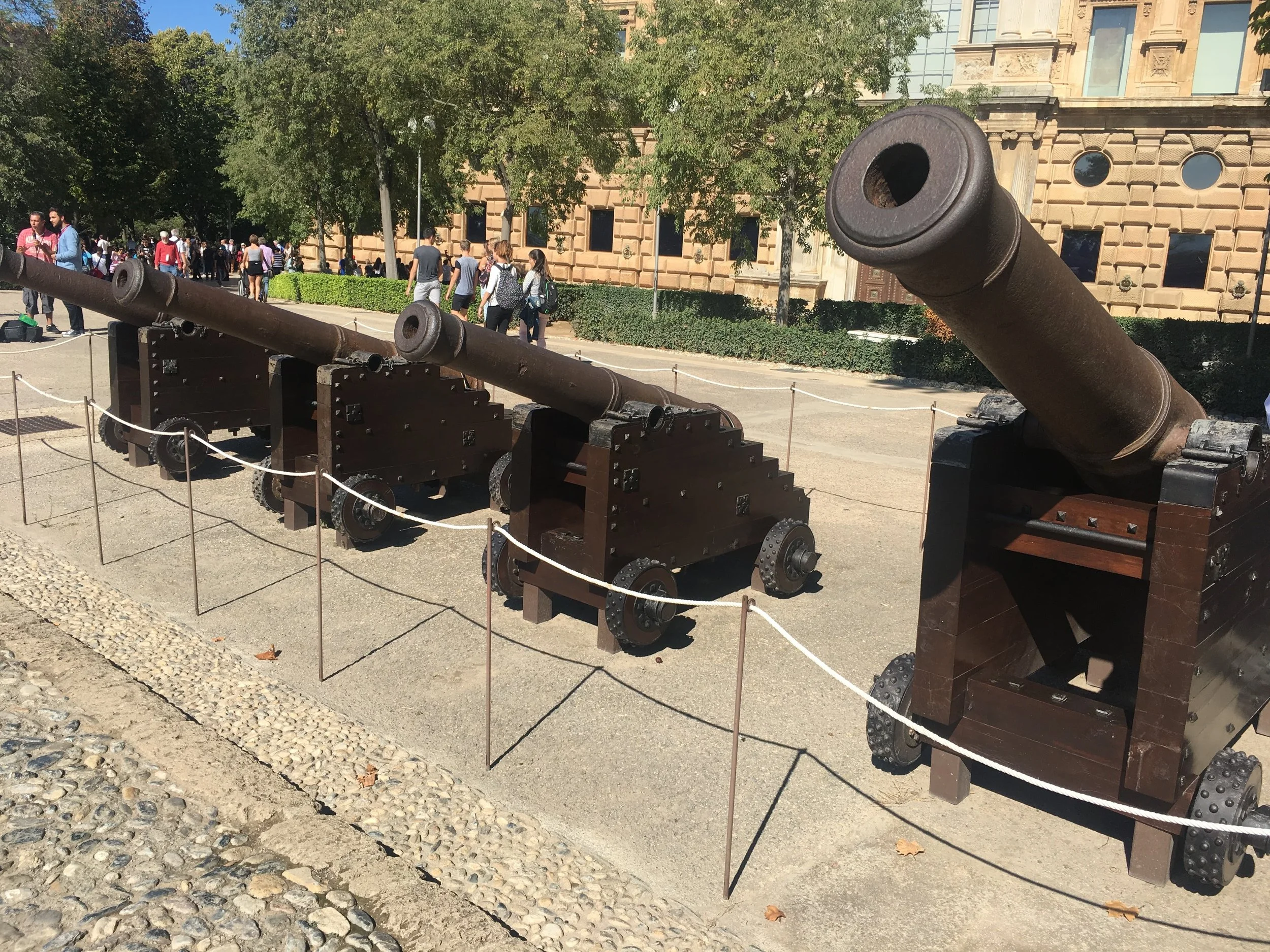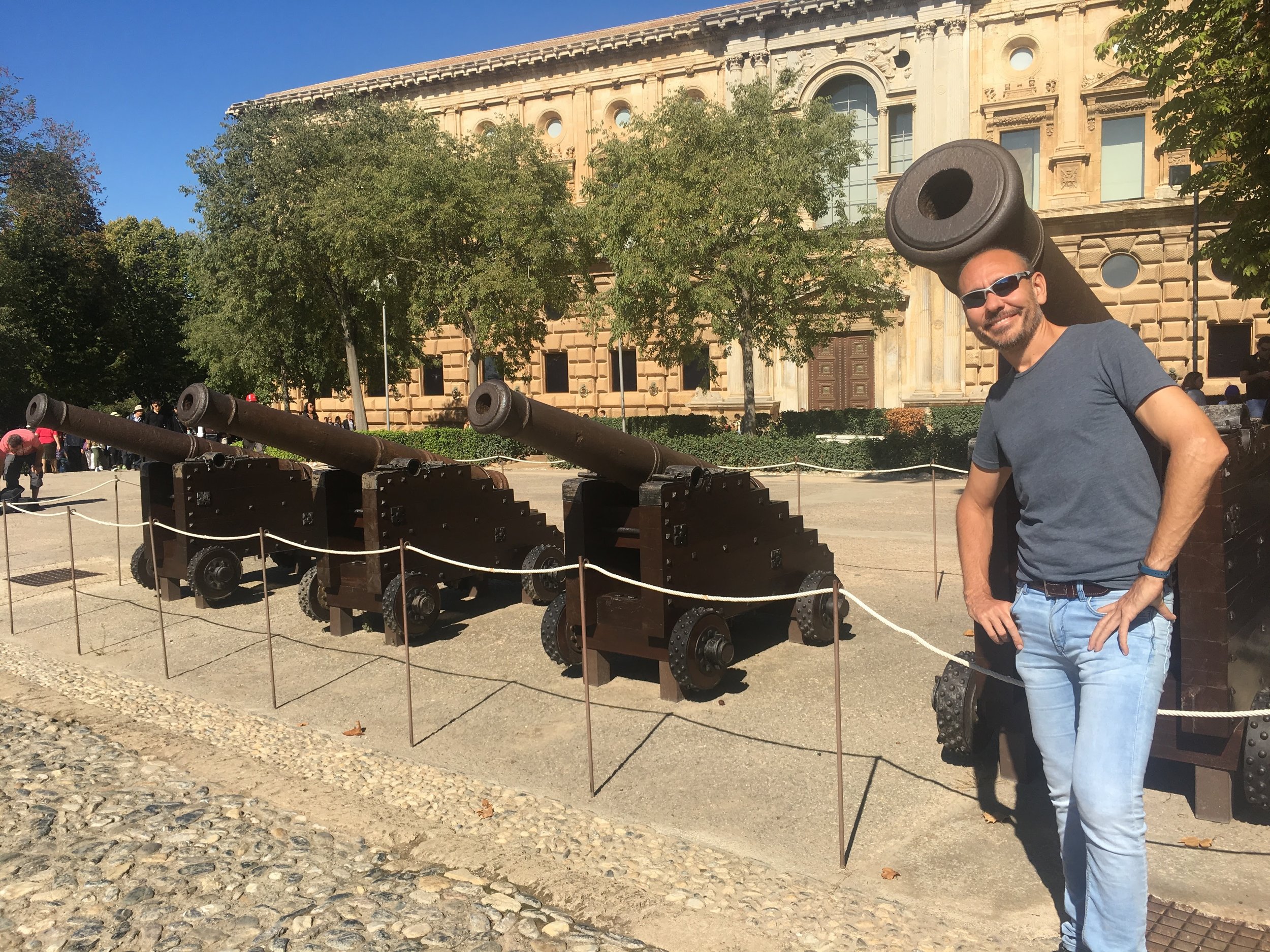Cannons in Localization? ... Ready, aim, fire! focusing on quality at source
You get very nice tapas in Granada with your beer! yummy!
On January 28, 1810, the imperial troops, commanded by General Horace Sebastiani, entered Granada, beginning a period of occupation that would keep the city in Napoleonic hands for a handful of year. The Alhambra is not an exception in this occupation, having to endure being used as a barracks, the construction of new defenses or the destruction of houses to create the Plaza de Armas.
Last weekend I went with my family to spend the weekend in Granada, and that city is truly amazing! not only for the tapas (which are free in many places when you order a beer!) but also because the area of Granada and Generalife Palace is very impressive.
While visiting the Alhambra I found these cannons that they were used by the imperial troops 200 years ago to protect the city against invaders,
My mind started to fly and to imagine how defending a city from the top of a hill might be back in those days... and while I was there with those canyons I started to think….
If I had a cannon (in the figurative sense of the word, I am a peaceful person!) how would I use it to maintain my empire of Localization protected from invaders?
What invaders do we have in the world of Localization, and more specifically, what "enemies" do we have?
And I came to the conclusion that I would use these cannons to protect my Localization kingdom from the beginning, from the root of many of the problems we face.
I would aim with my "cannons" to improve quality at source!
How would I aim for quality of source? Well, easy, 4 cannons, 4 shots to “kill” our quality invaders
Cannon 1 aiming to
Glossaries, I cannot stress enough how important to use glossaries is for our industry, we need consistency. Who can remember how a term was translated a few weeks ago? or even a couple of years ago? Glossaries are important as they help to build a stronger brand message and also, they can help us to save money (through terms recycling from translation memories). Glossaries play an important role to provide quality at the source.
Do you need some advice about how to create a glossary? No worries, the very talented team of Venga Global are so generous that they created an e-book that we can download HERE. Thank you Venga!
Cannon 2 aiming to
Style guides are crucial to building our brand message. Every brand has its own unique tone of voice. Facebook, for example, uses a simple, straightforward, conversational tone in all of its writing, regardless of the language. Every brand has its own voice, and this voice is explained in a style guide. The style guide will answer questions such as: do we want formal or informal language? Do we prefer active verbs or passive voice? A cannon aiming to the style guides is important to produce relevant content with the right tone; and we need to create detailed style guides using multiple examples and updating the style guide as often as necessary; because languages are living bodies, they evolve and our companies evolve as well. Do you need some very detailed examples of how style guides look in different languages? What about if “I” give you the style guide in 72 languages? so you can see different formats and structures? Thank you Facebook Globalization team for making this document publicly available worldwide. Click HERE
Cannon 3 aiming to
Translation Memories, at this point of maturity in the Localisation industry, rivers of ink have been written about translation memories, and why they are important. To keep this post short I’ll say that TMs are good because:
They help to save cost by reusing previous translations
They help to reduce turnaround time. The better we create our TM, the less a translator will translate from scratch. Eventually, this will lead to getting quicker turnaround times for our projects. Not very familiar with Translation Memories and how to get the most of it? No worries, the “inventors” of TMs created this helpful article. Thank you, SDL!
Cannon 4 aiming to
Proofreading. Despite having glossaries and TMs we might have mistakes in our sources files. For this reason, we need to use our last cannon to aim quality to find typos, grammar mistake,s or any language inconsistency. Investing time reviewing our source files makes up for the effort.
4 cannons 4 ideas to aim for quality at source, because in our Localization industry we also have invaders, they look very different from the invaders of Granada 200 years ago, but they also cause problems; although fortunately, these invaders of the 21st century do not cause any death; let’s relax then, we can use these 4 cannons in a more friendly way :)
What is your opinion about this topic? If you had “cannons” to defend your Localisation empire, how would you do it? Where would you aim to maintain quality at an optimum level? Leave your comment below and let’s share ideas so we can continue protecting from the enemies of our industry :)
















Before jumping on the AI bandwagon: What localization problem are you trying to solve? AI is everywhere right now, including in localization.
But before jumping on the bandwagon, we need to stop and ask:
Are we solving the right problem?